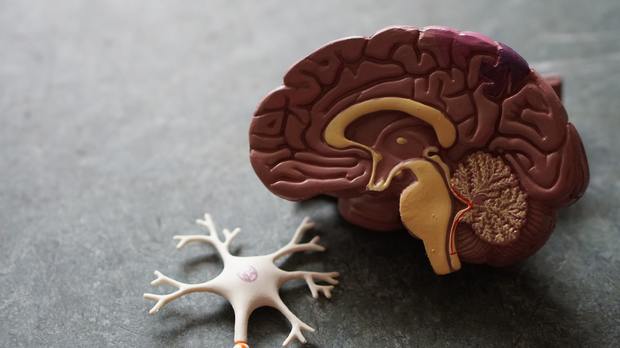Table of Contents
I. What is Erectile Dysfunction?
II. What Causes Erectile Dysfunction?
III. How can Erectile Dysfunction be Treated?
What is Erectile Dysfunction?
Erectile dysfunction (ED) is a common condition amongst men and affects around 30 million Americans. [1] Erectile dysfunction is the inability to get or maintain an erection that is firm enough to have sexual intercourse. Erectile dysfunction can be caused by physical or psychological factors and may be occasional or recurring. If erection failure occurs less than 20 percent of the time, then it typically does not require treatment like Viagra. Erectile dysfunction can include:
- The permanent inability to get an erection.
- The ability to only get an erection sometimes.
- The inability to maintain an erection throughout sexual intercourse.
ED is also known as impotence, although that term is less widely used these days. This is because impotence can also be used to describe other non-erectile medical conditions. ED becomes more common as men become older but it can affect men of any age. Around 40 percent of men aged 40 are affected by ED. This increases by roughly 10 percent each decade, affecting up to around 70 percent of men aged 70. [2]
Continue reading to learn about the causes of erectile dysfunction and the available treatments. Erectile dysfunction can be caused by physical, psychological, and external factors. An erection occurs when a male is sexually excited. Typically, this is through sexual thoughts or direct contact with the penis. Sexual excitement causes the brain to send signals to the penis, telling the penis muscles to relax. Once these muscles have relaxed, blood flows through the arteries of the penis, filling two chambers and causing the penis to become larger and firmer. Once an erection has been achieved, the blood vessels close off, allowing the erection to be maintained for sexual intercourse. Following sexual arousal, these blood vessels open again, so that blood can leave the penis. As men get older, it is more likely that ED will be a result of a physical cause. 90 percent of ED in men aged 50 or older is caused by a physical condition. [2] It is common knowledge that erectile dysfunction is more common as men get older. However, it is not the aging process itself that causes ED. As people age, they are more likely to have a physical health condition that may cause ED. The process of getting an erection is very complex, involving the brain, blood vessels, muscles, nerves, and penis. Problems or complications in any of these areas can prevent a male from getting or maintaining an erection. A common cause of erectile dysfunction is hypertension or high blood pressure. This physical condition can cause arteries to become thicker, restricting blood flow. If sufficient blood cannot flow to the penis, an erection will not occur. Additionally, high blood pressure can also worsen ED. [3] Diabetes is another common physical cause of ED. ED can be caused or worsened by both type 1 and type 2 diabetes. [4] High blood sugar levels can damage blood vessels and nerves. Heart conditions can also affect blood vessels and muscles, causing erectile dysfunction. These conditions can cause insufficient blood supply to the heart. Occasionally erectile dysfunction may be an early warning of heart problems. [5] As well as blood and heart problems, erectile dysfunction may also be caused by a penis condition such as Peyronie’s disease or priapism (a condition that causes the penis to remain erect for long periods of time in the absence of stimulation). [6] An erection is achieved when the brain sends a signal to the penis to relax the penis muscles. Therefore, certain mental health conditions, such as depression, anxiety, and stress can lead to erectile dysfunction. These conditions make it more difficult for the brain to release the appropriate hormones and to create the correct nerve connections. Psychological causes are particularly common in younger men. Psychological erectile dysfunction affects approximately 90 percent of teenagers and young male adults. However, this is typically short-term. [7] Stress is another common cause of psychological erectile dysfunction and is the primary cause of ED in middle-aged men. Erectile dysfunction may be a result of financial, job problems, or life events such as the loss of a loved one. [7] Relationship troubles can also worsen erectile dysfunction, particularly when combined with other psychological factors. Often, good communication and involving a partner in treatment can help reduce ED. There is no automatic magic cure for erectile dysfunction and treatment will depend on the cause of ED. The most common method of treating ED is through prescription medications. Lifestyle changes or therapy may also improve the condition. Some men may be hesitant to visit their doctor about erectile dysfunction, but this condition is common and there is no need to worry about telling your doctor. There are many different erectile dysfunction medications, most of which work in the same way. The most commonly prescribed ED drugs are: All three of these medications are PDE5 inhibitor drugs. They help to relax the muscles in the walls of the blood vessels, which then increase blood flow to the penis. These drugs also slow down the signals that end an erection so that patients can maintain their erections longer. Erectile dysfunction medications do not increase sexual desire and will not work to trigger an erection without sexual stimulation. [8] Each medication affects patients differently and it is normal to try different prescription ED medications to find which is most effective for you. Your doctor will be able to inform you about the pros and cons of using Viagra, Cialis, or Levitra Erectile dysfunction is caused by one or more physical or psychological factors. However, risk factors may worsen the effects of ED or even be the underlying cause of physical factors. One of the most common causes of erectile dysfunction is obesity. Around 80 percent of men that are overweight or obese have sexual dysfunction problems. [9] Obesity often causes other health conditions that cause or worsen ED, including heart disease, diabetes, and high blood pressure. Along with the use of prescription medication, reducing ED risk factors can also help to reduce the symptoms of erectile dysfunction. ED that is caused by being overweight or obese is usually reversible. Eating a healthy diet and exercising regularly can help weight loss, which can improve the quality of erections. Another common risk factor for erectile dysfunction is the use of drugs, including alcohol and tobacco. Frequent or excessive drinking of alcohol can damage the body’s nervous system and decrease the volume of blood in the body. Tobacco also restricts blood flow around the body. Both smoking and drinking alcohol may cause other health conditions, including heart disease, that may worsen ED. [10] If you want to reduce erectile dysfunction problems, it may be in your best interest to quit or reduce your intake of alcohol and tobacco. The content in this article is intended for informational purposes only. This website does not provide medical advice. In all circumstances, you should always seek the advice of your physician and/or other qualified health professionals(s) for drug, medical condition, or treatment advice. The content provided on this website is not a substitute for professional medical advice, diagnosis, or treatment.
What Causes Erectile Dysfunction?
a. What Causes an Erection?
b. Physical Causes of ED
c. Psychological Causes of ED

How Can Erectile Dysfunction Be Treated?
a. Medications
b. Reducing Risk Factors

